
What Do Sitemaps Have To Do With Generating Traffic.
17 September 2022Without sitemaps, do you think Google crawlers get lost on their way to gather and index your latest blog post? Well I tell you this that sitemaps is a great component to have and aids in generating traffic for your site. In this post I’m going to talk about what they are and how they benefit your blog.
When it comes to helping search engine crawlers find their way within your blog to index your content, sitemaps are a life saver!
Without them many of our pages and posts would not be in a search engine’s database.
Do you remember how we used a phone book to look someone up?
If they didn’t register their phone number, then we had to find other way to find out how we could get into contact with that person.
Hopefully we would’ve been able to run into them on the streets right?
The phone book was each individual’s “search engine” so to speak. We couldn’t just type in a name like we do now with Google. We actually had to really search to find who we were looking for!
But with sitemaps, it makes it easier for search engines to find each page and post within your blog.
When it comes to SEO (Search Engine Optimization) Sitemaps are a great alternative to backlinks. When you have a new blog, it can be difficult for search engines to find and index your blog. But with sitemaps, it allows search engines to crawl your sites more efficiently.
If you’re not too sure about SEO, Check out what SEO is and the benefit of having an SEO checklist for each of your blog posts. Also if you don’t want to memorize a checklist, I talk about a plugin installed on my WordPress Blog that guides you on what steps to take in order to make each post SEO Compliant!
In the next section I will show you How I set up an XML Sitemap within my WordPress blog and Google Webmaster Tool.
Table of Contents
- How To Set Up Google XML Sitemap
- Why would you want to get your blog or website indexed with search engines?
- How To Download And Install Google XML SiteMap In WordPress
- How To Set Up Your Sitemap in Google Webmaster Tools
- Now It’s Your Turn!
- Sending your log data in realtime with Syslog-ng.
- Turn your Smartphone looks like a Desktop Computer.
- How to Upgrade Ubuntu 10.10 to 11.04 Natty Narwhal Beta 1.
- How to Mount ISOs on Linux using Terminal.
How To Set Up Google XML Sitemap
If you’re new, you’re probably wondering if there are different Sitemaps. Actually there is, but the standard one is XML. Actually sitemaps use to be published in HTML but now the standard is XML. The XML (Extended Markup Language) Sitemap which actually gives you more control over your sitemap.
It allows you to prioritize which page or post is more important and also you can pick which ones you want search engines to crawl. With that said, with an XML Sitemap search engines can figure out when you’re blog is updated, what parts are updated more frequently, and figure out a time to craw your blog.
FYI: Sitemaps does not boost your search ranks even though all of this is going on
Why would you want to get your blog or website indexed with search engines?
You want your site to be found. If someone types in a subject on Google, you want your site to come up in Google as well as any other search engine site! The fact that your site is in the search engines records makes it easier for the search engine to pull up your site.
If you want a better idea of how Search works, then I highly recommend that you check out on how your site and posts gets found on Search Engines. You get the Insider’s Information on what the search engine does in order for your site to get indexed and found by others!
When it comes to creating your sitemap, you have a plethora of tools! There’s WordPress SEO by Yoast, Google XML Sitemap, and Google XML Sitemap for Videos just to name a few.
The one I use is Google XML Sitemap. There’s actually no particular reason why I chose this one. It was recommended to me a while back, and i just stuck with it.
But it does help to know that this plugin was downloaded over 13 million times, and it was last updated June 3, 2014 which is current from when this blog post was published.
So lets get into the steps on how you can install and activate this plugin!
How To Download And Install Google XML SiteMap In WordPress
You can Download the Plugin to an FTP program or you can download and install it within your wordpress account. I chose to download and install within WordPress.
- Log into Your WordPress Account and Click on Plugins on the left
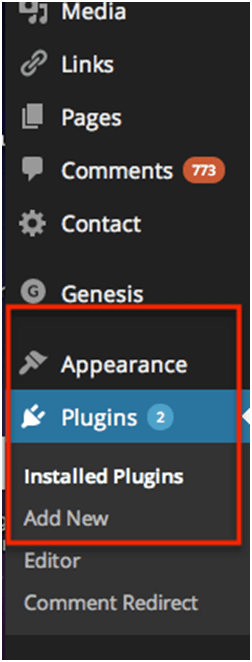
2. Click on Add New

3. Type Google XML Site Map And Search Plugins

4. As of the blog post, the latest update was 4.0.6.. Click on “Install” for this current version or later versions.
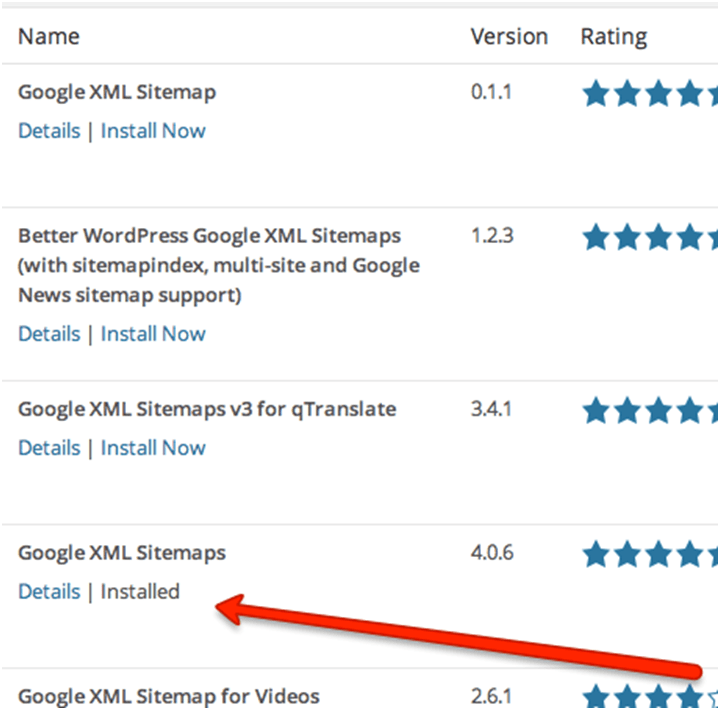
5. Once installed, You can get to the settings by click on Settings and XML-Sitemap
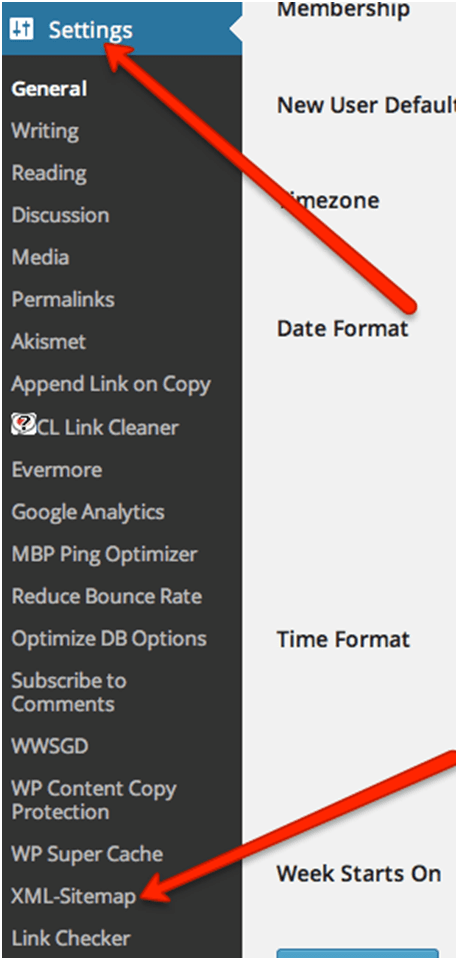
6. You can make changes for yourself. I left everything by default. Also you want to take note of the URL to your sitemap index file. You will want to add it to Google Webmaster Tools

How To Set Up Your Sitemap in Google Webmaster Tools
Now that you have your sitemap installed on your wordpress, the next step is to set it up in Google. We’re going to set this sitemap up in Google Webmaster Tools. If you don’t have an account already, go ahead and create one so that we can set up the sitemap.
With the Google Webmaster Tools you can keep track of what and when your posts have been crawled by Google, and you can check to see if there have been any crawl errors! So let’s go ahead and set up your sitemap here!
- Go to Google Webmaster Tools and click on the “Add A Site” Button

2. Go ahead and add your blog address and Click Continue

- You want to verify ownership of your blog.. Go ahead and click Verify
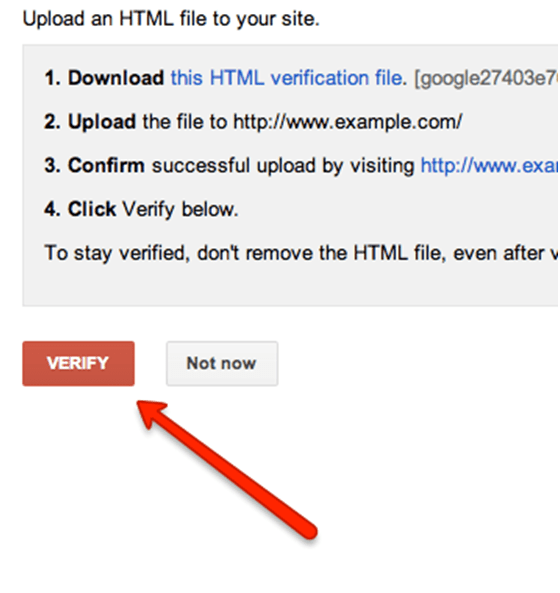
- Once your site has been verified, we can now setup your sitemap. Go back to the home page of Google Webmaster Tools and Click on your site.

5. On the left side under “Site Dashboard” Click on “Crawl” and then click on “Sitemaps”

6. Click on the “Add/Test Sitemap” button to add the URL to Google Webmaster Tools
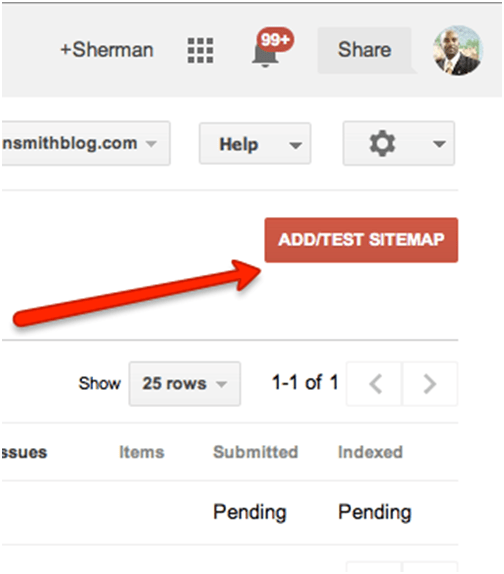
7. Once you click on button, another box comes up on the “Add/Test Sitemap” button and allows you to put in your sitemap. Once done, click on “Submit Sitmap” and you’re done!

As for my site, since I had over 300 posts, it took about a week for Google to index all of my posts. It may be different for you, but this is just a heads up.
Now as far as generating traffic, specifically organic traffic from search engines, having your site indexed within Google will make it more convenient for your site to generate traffic. Top that off with making your posts SEO Compliant, Growing Social Engagement, and Google Authorship, then you’ll definitely be on the right track of having a successful blog.
Now It’s Your Turn!
Have you gotten your blog or website indexed with Google? If so, how much of a difference did it make as far as generating traffic? Was it a big difference or minor? Please leave your comments below and share this post with your friends! I look forward to reading them!
















